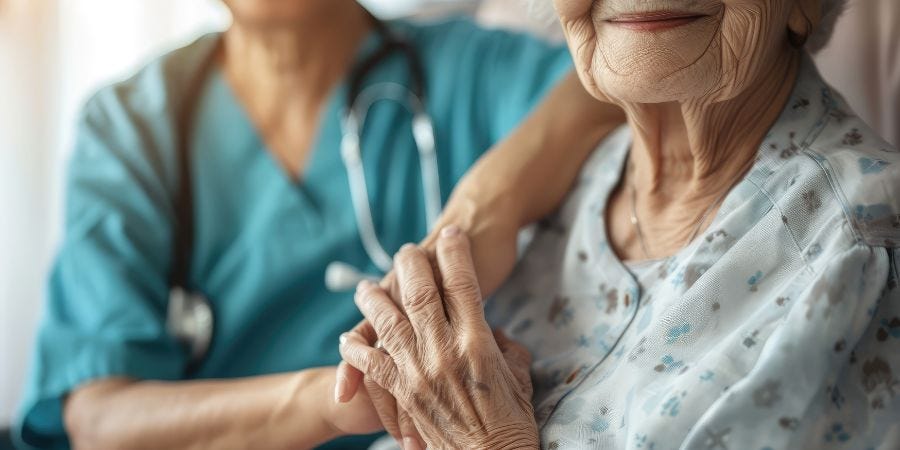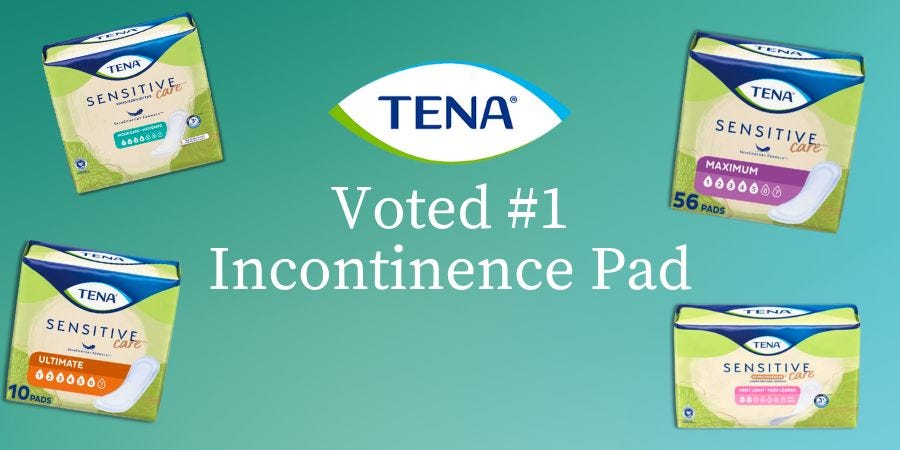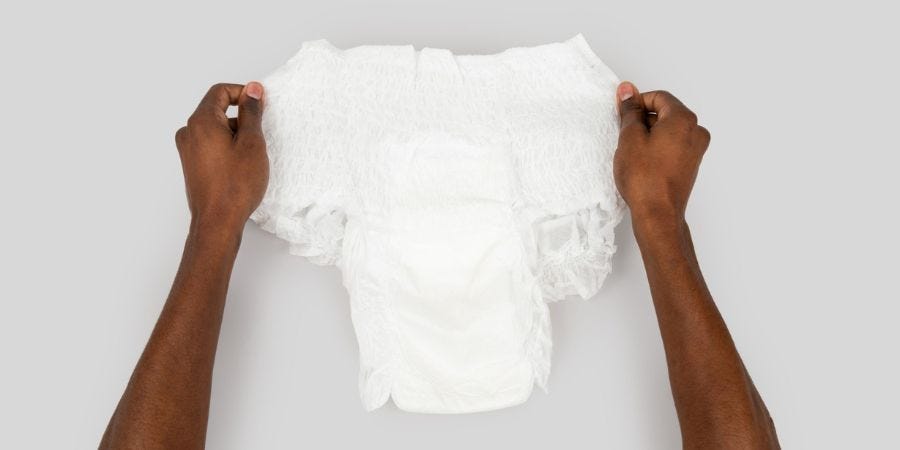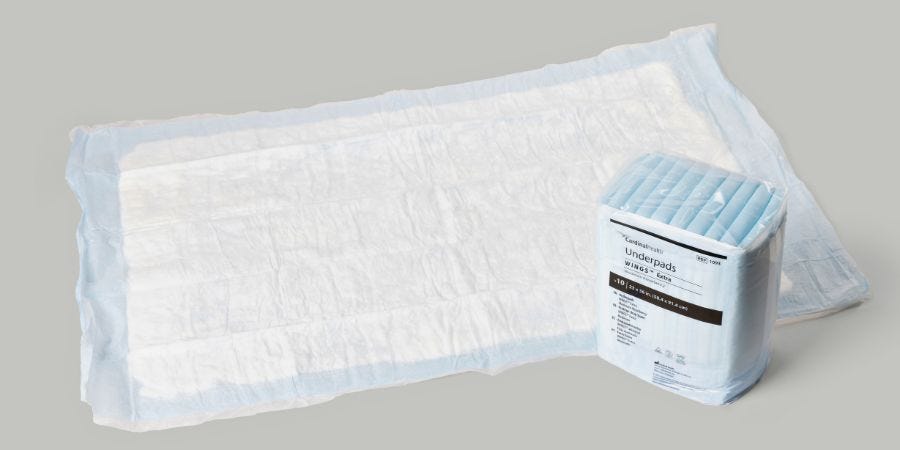Key Takeaways:
- The diaper gap is a health crisis where individuals with incontinence lack access to necessary products, affecting their mental, physical, and financial well-being.
- Diaper need impacts people of all ages, including children, adults, seniors, and people with disabilities, often exacerbating existing hardships and inequalities.
- Closing the diaper gap requires increased awareness, advocacy for better healthcare coverage, and community support to ensure everyone has access to essential incontinence products.
Imagine what it would be like to reuse toilet paper or reuse period products. It would be uncomfortable and unsanitary, and even pose certain health risks.
Check Your Eligibility
In Less Than 2 Minutes
From catheters to pediatric and adult incontinence supplies, discover the continence care essentials covered by your insurance.
Unfortunately, individuals of all ages and abilities across the United States who manage bladder and bowel control issues live in a reality where circumstances like these are the norm. Sadly, their suffering is overlooked by our government, health insurance plans, healthcare providers, and society. This is the diaper gap or diaper need.
In this article, you’ll learn what the diaper gap is and how it affects those living without the bladder and bowel care products they require to live happy and healthy lives. You’ll also discover how you can help improve the lives of thousands of people nationwide by helping to end incontinence product need.
What Is the Diaper Gap?
The diaper gap is a health crisis. It's one that poses a continuous struggle for people dealing with bladder and bowel control issues, a condition known as incontinence. Those affected by diaper need are forced to navigate their daily lives without the necessary incontinence products essential for managing symptoms like leakage. The absence of accessible incontinence products stops these individuals from enjoying a healthy and satisfying lifestyle.
The products that someone may require to control urinary and fecal leakage may include:
- Adult briefs (adult diapers).
- Adult protective underwear.
- Pediatric diapers.
- Pediatric pull-ups.
- Bladder control pads.
- Other accessories, like underpads, gloves, and wipes.
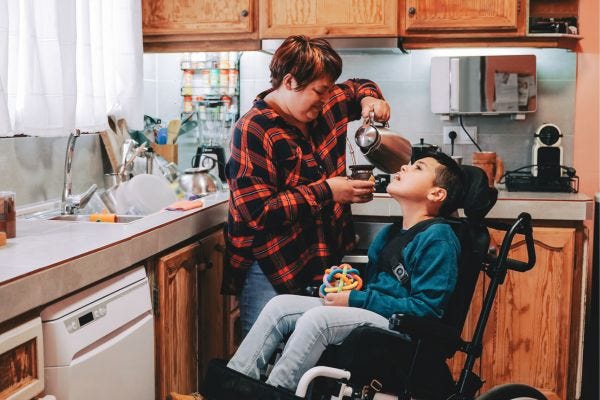

These incontinence supplies are vital for individuals facing incontinence. Similar to clean water and medical provisions, they help people maintain their health and lead a regular lifestyle. Without these supplies, people sometimes resort to reusing incontinence products, prolonging the usage of products beyond recommended limits, or improvise controlling their leaks with household items, like socks or toilet paper. These makeshift solutions can lead to hygiene and health complications, and it places great stress on mental health and financial situations.
According to a study conducted by Aeroflow Urology involving more than 1,000 individuals with incontinence or caring for someone with the condition, the absence of adequate product supply results in different medical issues.
- 46% of people experienced skin irritation, like rashes and infections.
- 31% experienced urinary tract infections (UTIs).
- 23% experienced vaginal / genital infections.
- 22% experienced worsened incontinence symptoms.


Like clean water and medical supplies, incontinence products allow children, adults, and seniors to live healthy and happy lives.
Many people living in incontinence product need don’t have access to the supplies they require because they are too expensive to purchase out of pocket. Even those with health insurance, like Medicare and Medicaid, are prohibited from receiving the necessary products due to requirement and regulation barriers.
Living without incontinence products also affects the mental health of caretakers and individuals managing incontinence. The inability to provide adequate products to loved ones and managing incontinence symptoms have harmful side effects on both caregivers and people with the condition. Our survey showed that 703 out of 976 individuals caring for loved ones with incontinence or managing symptoms themselves experienced stress, anxiety, depression, and shame.
- 39% experienced stress or anxiety.
- 16% experienced depression.
- 11% experienced shame.
What Is Incontinence?
Incontinence is the loss of bladder or bowel control.
- Urinary incontinence: Loss of bladder control resulting in urinary leakage.
- Bowel incontinence: Loss of bowel control resulting in fecal leakage.
Any person of any age can experience any type of incontinence. This is because incontinence has a wide range of causes, including:
- Hormonal changes (pregnancy, menopause, menstruation, hormone therapy).
- Childbirth
- Prostate problems (benign prostatic hyperplasia (BPH), prostate cancer).
- Special needs (autism, Down syndrome, etc.)
- Neurological disorders (spinal cord injury (SCI), Parkinson’s disease, Alzheimer’s disease, etc.)
- Infections (UTIs, vaginal infections, etc.).
- Aging
- Constipation
- Transgender surgeries.


Incontinence is prevalent in older adults since it can naturally occur with aging due to loss of pelvic floor muscle strength and elasticity. It’s also widespread among children and adults with disabilities like autism and Down syndrome. While it’s less common in teens and adults without special needs, it’s still prevalent among these groups, and both men and women can experience symptoms.
Types of Incontinence
Stress incontinence: Leaking urine when coughing, sneezing, exercising, lifting heavy objects, or running.
Overflow incontinence: Leaking or dribbling urine due to the inability to empty the bladder completely (urinary retention).
Urge incontinence: Feeling the sudden and intense urge to urinate more than usual (sometimes called overactive bladder (OAB)).
Functional incontinence: Leaking urine or fecal matter due to a physical or mental disability that keeps someone from making it to the toilet.
Mixed incontinence: Experiencing 2 or more sets of incontinence symptoms at once (for example, leaking urine when coughing and voiding the bladder more than usual).
Who Does the Diaper Gap Affect?
The impact of the diaper gap extends to individuals of all age ranges, leading to a multitude of mental, physical, and financial challenges. This issue has wide-ranging consequences within the diverse incontinence community, encompassing children, women, men, seniors, caregivers, and individuals with disabilities. Furthermore, minority groups experience significant disparities in access to incontinence products. Findings from our study indicate:
- 34% in need of diapers were infants.
- 22.5% were children.
- Almost 20% were parents or seniors.
- 15.5% were adults.
- 6% were children with disabilities.


Children
It’s widely known that caregivers of infants and toddlers need to have access to diapers and pull-ups. What’s less known is that older children with incontinence due to special needs or toilet training delays also require incontinence products, like diapers, pull-ups, and underpads, to manage their leakage. Without these products, caregivers may keep their little ones in soiled products. Children sometimes must stay home from daycare or school because they’re turned away from care without diapers.
Adults
Men and women with incontinence require briefs, bladder control pads, and protective underwear to keep themselves dry and comfortable throughout the day. Without these products, working adults may stay home from work, resulting in missed income, leaving them even less revenue for products. Many adults also self-isolate, missing activities or social events due to embarrassment or shame around their condition.
Seniors
Incontinence is prevalent among seniors because incontinence can occur naturally as we age. Seniors need incontinence supplies to go about their daily lives, and without them, they may be confined to their homes and care facilities. Incontinence supplies are necessary for older adults with less mobility because they can’t make it to the bathroom or toilet to void their bladder or bowels.
Individuals With Disabilities
Children and adults with disabilities, such as autism, Down syndrome, and more are more likely to experience incontinence than those without disabilities. These individuals require incontinence products to manage their leakage. Some children with potty training delays due to a special need may require diapers or pull-ups for a short period. At the same time, some with disabilities will never gain control over their bladder or bowels, resulting in a lifetime of incontinence product use, which can be outrageously expensive to pay for out of pocket. Adults with disabilities are also faced with ableism, which can hold them back from obtaining jobs and pose other daily challenges. These challenges may result in less income or access to incontinence products, placing them deeper in diaper need.
Mintority Groups
Minority groups face financial, medical, and educational barriers due to racism, and minorities with incontinence also face obstacles in the diaper gap. Many individuals and families live in poverty, which places them at a higher risk for having disabilities. One study showed that Non-Hispanic African Americans had the highest prevalence of severe disability among all racial groups, meaning they’re more likely to have incontinence, so they’re more likely to live in incontinence product need.
How Has the Diaper Gap Gotten Worse?
While different groups struggle to manage their bladder and bowel issues without sufficient access to supplies, other factors continuing or arising across the nation are making it even more challenging to end diaper need.
The Pandemic
The COVID-19 pandemic has led to high costs, and incontinence products have been included in the price hikes, making it harder for people to budget for them. COVID-19 has also caused an uptick in incontinence cases due to the physical effects the illness causes in the body during and after infection.
Lack of Government Assistance
Government assistance programs to help low-income families afford necessities are gravely lacking since incontinence products are not allowable expenses, leaving many people going without them. Specific programs, like the Women, Infant, and Children (WIC) program and the Supplemental Nutrition Assistance Program (SNAP), don’t allow incontinence products to be covered by allotted funds. And those that do, like the Temporary Aid to Needy Families (TANF) program, don't provide enough money for families to purchase incontinence products and stay within their allotted budget.
Limits on Health Insurance Coverage
While Medicaid and Medicare are meant to give insurance coverage to those needing expensive medical supplies, many individuals go without incontinence product coverage. People on Medicaid have to jump through hoops to be eligible for their products, having to prove they’re medically necessary. Unfortunately, Those on Medicare are not covered for supplies since Medicare doesn’t deem incontinence products as “medically necessary.”
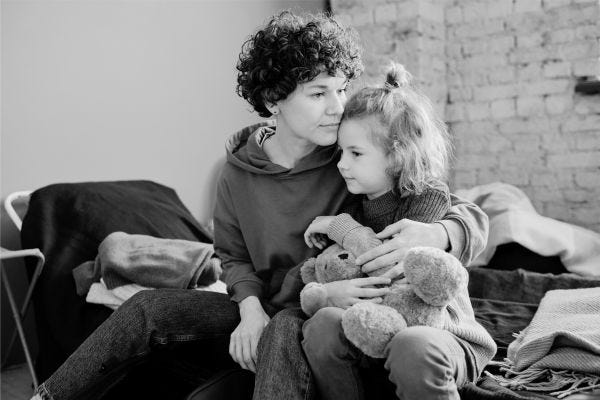

Inflation & Poverty Rates
Inflation is also affecting those in diaper need, forcing families to make complex decisions when it comes to choosing between bills, groceries, or diapers. Poverty rates among those in need of diapers remain steady and are likely to increase due to inflation. In our study, 665 respondents reported that they needed diapers but could not afford them. Of those 900 surveyed, 54% said their household income was less than $25,000 (single income) or less than $50,000 (two-person income). People in poverty are also more likely to need incontinence products because they are at a higher risk of having disabilities, while requiring incontinence products leaves less free-flowing income for families, placing them in poverty.
How You Can Help Close the Diaper Gap
Diaper need touches every individual with bladder and bowel control issues, whether they’re managing leakage for a short period or a lifetime. It places financial burdens on families and individuals and causes mental health issues and severe physical health problems. The good news is that you can help close the diaper gap!
Closing the diaper gap and ending incontinence product need will positively affect families and individuals in many ways.
If those in need could receive incontinence products they require through insurance or other government assistance programs, they would ultimately live happier and healthier lives. Those with incontinence would feel the improvements product access could have on their mental well-being, and the risks of health complications would decrease. The financial strain of budgeting for incontinence products would be lifted on every family and individual, helping them save and spend where money is needed.
Ways to Help Close the Diaper Gap
- Sign our petition. Our petition aims to expand healthcare coverage for incontinence products, giving access to free supplies to people of all ages around the country. Sign our petition today to help end incontinence product scarcity!
- Advocate for those with incontinence. Educate yourself and those around you about incontinence and what it’s like to live without the products required to maintain quality of life. Spread awareness about this issue so that the groups of people living in diaper need are no longer overlooked.
- Reach out to your state representatives. Those in the diaper gap would benefit from healthcare coverage expansion through Medicaid and Medicare. Contact your state representatives and advocate for health insurance expansion for incontinence products and conditions.
- Share your story of living in the diaper gap. Assist us in spreading awareness about diaper need by sharing your story of what it’s like to live without incontinence products. Share your story today!
Do You Need Incontinence Products?
If you or your loved one requires incontinence products, you may be eligible to get them through your Medicaid plan with Aeroflow Urology. Fill out our Eligibility Form today to see if you qualify. If you do, we'll send you free incontinence supplies every month right to your doorstep. We'll also refill your supplies every single month so you are never living in need.
References
Goyat, R., Vyas, A., & Sambamoorthi, U. (2015). Racial/Ethnic Disparities in Disability Prevalence. Journal of Racial and Ethnic Health Disparities, 3(4), 635–645. https://doi.org/10.1007/s40615-015-0182-z
Survey 2023 Conducted by Aeroflow Urology Over 1,000 Individuals Surveyed. (n.d.). Retrieved July 5, 2023, from https://aeroflowurology.com/media/amasty/amfile/attach/XzlyfjeR3205AOimyaWl1Jakdioczc2j.pdf
Acknowledging the Unseen Diaper Divide: Incontinence Product Access for All People Written by Marlee Septak. (n.d.). Retrieved July 12, 2023, from https://aeroflowurology.com/media/amasty/amfile/attach/8HixZOoKKkyZEwYWq7KeG4O6ZYtnAaSR.pdf
Disclaimer
Information provided on the Aeroflow Urology blog is not intended as a substitute to medical advice or care from a healthcare professional. Aeroflow recommends consulting your healthcare provider if you are experiencing medical issues relating to incontinence.


